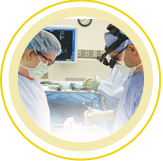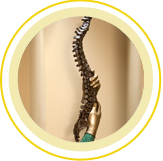 According to the American Physical Therapy Association, two thirds of Americans have lower back pain sometime during their lives. It’s what to do with and about that pain that matters. Should you exercise through lower back pain? The common sense answer to you now may be: if “it hurts when you do this,” then don’t do it.
According to the American Physical Therapy Association, two thirds of Americans have lower back pain sometime during their lives. It’s what to do with and about that pain that matters. Should you exercise through lower back pain? The common sense answer to you now may be: if “it hurts when you do this,” then don’t do it.
All joking aside, chronic lower back pain can result in a lot of adults losing time at work, and it can interfere with normal day to day activities. The last thing you want to do is exacerbate the injury and increase the pain.
What To Do About Lower Back Pain
Most of the time lower back pain is a result of daily stress and weak muscles. Sometimes it is a spasm caused by an accident or just putting on your socks in the morning.
You might start with some tried and true home remedies like ice, massage, or over the counter medications, then modify your exercise routine and lower the intensity of your work out. Pay careful attention to the pain when it happens, and what you are doing. If the pain gets worse or doesn’t go away within 72 hours, a trip to see the providers at Spine & Scoliosis Specialists may be in order.
If this is indeed a chronic issue, you may already have a physical therapist you can turn to for help. The worst thing you can do is to ignore it or think you can “work it out.”
What To Do With Lower Back Pain
Somewhere between total bed rest and exercising through lower back pain is a middle ground, or a sweet spot like the one Goldilocks aimed to find. If there are red flags of pain, curtail what you are doing. Your goal should be to work around the pain, not through it. Find other ways to stay active that don’t make the pain worse or might cause further injury.
Best Ways To Work Around The Pain
Every move we make, ironically including when we’re not “moving”, contributes to our overall physical condition. Bed rest or lack of physical activity can eventually lead to more pain or a future injury, whereas normal physical activity is key to healthy joints and muscles.
Stay Active
Exercise helps our muscles to relax and it increases blood flow to the back area. Avoid sitting for long periods. It puts pressure on our discs and tightens the hip joints which leads to tightened back muscles.
Walk At A Moderate Pace
The simple movement of walking is one of the best things we can do for chronic lower back pain. Ten to fifteen minutes of walking twice a day will help ease lower back pain. Substitute this activity for a more vigorous type of exercise if you prefer and/or are able.
Water Exercise
Swimming is a great way to maintain movement without pressure on joints. Find your comfort level in the water and keep safety in mind, especially if no lifeguards are on duty.
Stretch
Controlled stretching can calm lower back spasms. One effective example is the Back Pocket Stretch. Stand with your hands behind your back and place them like you are putting them into your jeans back pockets. Then look up and slowly stretch your back.
Try Yoga
This may help to release muscle spasms and develop strength in your abdomen, back, and hips.
No one knows your body like you do. Remain active through lower back pain, but avoid actions that make your lower back pain worse. See Spine & Scoliosis Specialists in Greensboro or High Point if your lower back pain does not subside or gets worse.
Sources:
https://www.everydayhealth.com/pain-management/back-pain/dos-donts-lower-back-pain-exercises/
https://www.verywellhealth.com/is-it-safe-to-exercise-with-back-pain-or-a-sore-back-296818
https://www.spineuniverse.com/resource-center/lower-back-pain/should-you-exercise-when-you-have-lower-back-pain



